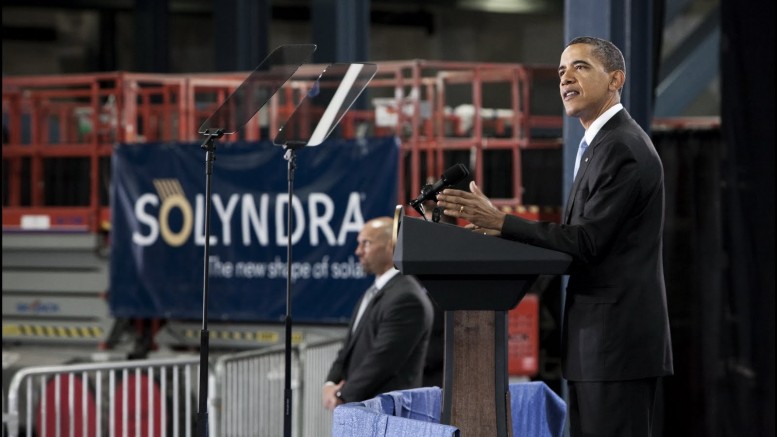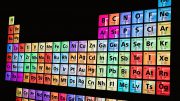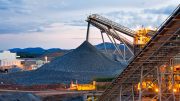The attempted rapid conversion of the North American economy from fossil fuels to green energy — recently in vogue in the U.S. — suddenly appears to be on hold with the recent Republican electoral sweep of the presidency, senate and house, while in Canada, Justin Trudeau’s Liberals are moving full speed ahead, most recently with the announcement of the Canadian government’s intention to phase out coal-fired power generation nationwide by 2030 — despite the dire consequences for Canada’s thermal coal mines.
Outgoing U.S. President Barack Obama simultaneously boasted about increasing fossil fuel production in the U.S. during his regime while doing everything in his power to hamper development. And as presidential candidate, Hillary Clinton promised an even more aggressive attack against conventional energy. President-elect Donald J. Trump has promised a more pragmatic, possibly cost-conscious, approach.
The philosophical differences between the Obama-Clinton-Trudeau and Trump camps are based on interpretations of climate science. The Obama group is in panic mode to curtail anthropogenic greenhouse gas emissions, believing that if we keep atmospheric carbon dioxide (CO2) below certain levels, at whatever cost, we can save the planet from catastrophe. The more pragmatic view is based on the interpretation that Earth’s climate is controlled far more by natural than human causes.
President Obama’s policies have many problems. He has proposed to rapidly replace viable hydrocarbon energy with more costly wind and solar, which are not feasible to produce reliable base load energy. In the process, he has created a hog trough of corruption, giving out huge subsidies to green energy entrepreneurs (think Solyndra), and generous climate research grants to professors.
Prime Minister Trudeau appears to be following President Obama’s course with his proposed subsidies and his phasing out of coal power.
Let’s take a deeper look at the state of the underlying climate change science.
We now have politicians led by President Obama and his 97% “scientific consensus” denigrating any scientist or person who might disagree with their assumption that global climate change is principally caused by human activity. These “flat earthers” or “climate change deniers” should be smeared, investigated, maybe incarcerated, and certainly not be allowed to occupy government positions. Every storm that comes along is erroneously attributed to anthropogenic CO2 emissions, and President Obama recently stated that even the Syrian conflict has resulted from human-caused climate change.
It is logical to attribute some portion of recent global warming to CO2 from growing industrialization, since this gas, which is also critical for life on Earth, comprises 75% of anthropogenic greenhouse gas emissions. But might there be other factors? Certainly there are, but you never see reference to them in the media.
But first, let’s discuss some serious questions that arise when one examines the science behind the “consensus” theory. There are so many totally unpredictable variables that it is impossible to make accurate predictions using computer programs. More specifically, doubts rise from the “consensus” theory that elevated CO2 levels are the prime cause of current warming. As well, aerosols are not properly accounted for, and the mechanics and effects of cloud formation are not well addressed.
In regard to CO2, as a geologist familiar with Earth climate history, I find it difficult to place anthropogenic CO2 emissions as a primary cause for global warming, since this gas has not correlated with past climate variations, even during recent geological time.
During the peak of what is called “Wisconsinian glaciation,” 20,000 years ago, much of Asia, Europe and North America were blanketed by thick continental ice sheets. In North America glaciation reached southward to a latitude of 45 degrees, and what is now Chicago was buried under one-mile-thick ice.

Ice thickness, landscape types and sea surface temperatures in North America during the last glacial maximum 20,000 years ago. Credit: Dandebat.
Since that time, particularly during the past 10,000 years, these great continental ice masses have receded all the way back to the polar regions. But during this interval there was the Medieval Warm Period, a 400-year interval of extreme warming, and the Little Ice Age, a 500-year period of severe cooling.
During this whole 10,000-year period of overall ice retreat with extreme intervals of warming and cooling, the atmospheric CO2 level stayed stable at under 300 parts per million (ppm).
Travelling deeper into Earth’s history, high CO2 levels have consistently followed warm periods, rather than vice versa. And at times glaciation coincided with CO2 levels of more than 4,000 ppm.
So what caused this stupendous glacial retreat, along with severe warming and cooling climate events in relatively recent times? Obviously, it was not elevated carbon dioxide.
The most suspect forces were variations in solar activity, changes in the tilt of Earth’s axis and variations in ocean conveyor systems. Volcanic eruptions have also played a role.
These natural forces, which have been active in the past, still are and always will be with us.
What I find most disturbing about the current climate change hysteria is that the political and media crescendo of anthropogenic warming fails to even mention natural forces.
In regard to cloud formation, this is a most critical factor in climate change. While it is true that rising CO2 emissions will increase cloud formation and enhance the greenhouse effect, escalating cloud cover also increases albedo (reflection back into space of cosmic and solar energy), which has a cooling effect.
The most compelling explanation that I have come across cites a climate change mechanism over 20,000 years that is based on research by a school of physicists and geologists, which connect climate events closely to variations in solar activity and ocean cycles.
According to distinguished astrophysicists Nir Shaviv, Henryk Svensmark and their colleagues, who are modern-day Galileos (both for their intellect and persecution by the powers that be), a most critical force causing climate change is highly energized cosmic rays originating from outside our solar system, which ionize the lower troposphere, and create aerosols that induce cloud formation.
“The leading cause to explain solar-induced climate variability is through solar wind modulation of the cosmic ray flux reaching the Earth, which affects climate through modulation of the amount of atmospheric ionization,” Shaviv states.
To paraphrase Shaviv’s theory: variable cloud formation is a principal control for climate change. Solar winds, which are a flux of energy particles entwined with magnetic fields, flow outward from the sun. During solar periods the winds are stronger and impede the flow of cosmic rays to the troposphere, which causes less cloud formation and global warming, while during quiescent periods there is far less interference, which increases cloud formation and albedo, bringing cooling. (See the ScienceBits.com report by Nir Shaviv titled “Carbon dioxide or solar forcing?”)
When one examines the astrophysicists’ empirical observations against real climate events, it is hard to disagree with their theory. It can even explain the 1940–1974 global cooling event.
The Shaviv camp of physicists say that the data of the supposed “consensus” scientists, based on computer models, are replete with multiple mulligans and are at best dodgy.
Shaviv does, however, acknowledge that recent-time elevated anthropogenic greenhouse gas emissions do affect global climate change, but they are not the primary cause.
Particularly galling to me are arrogant computer model-based predictions that if we keep atmospheric CO2 levels under a certain limit (say 350 ppm), humans will contain future average temperature rise to a degree or so centigrade. In reality, we are dealing with totally unpredictable natural forces — from solar variability to volcanic activity and meteorite impacts.
Common logic
Anthropogenic greenhouse gas emissions do have an unknown percentage effect on climate change, so the mitigation of industrial greenhouse gas emissions is a worthy effort.
But we don’t really know if this will affect global climate. Moreover, recent calculations by a distinguished economist indicate that even if every nation adhered to the recent Paris Agreement, the lowering of Earth’s temperature would be minimal.
Substituting natural gas power for coal has already lowered greenhouse gas emissions, and using natural gas to power more vehicles will also be effective.
The two most viable energy sources with current technology to replace hydrocarbons for reliable base load power are hydro and nuclear. Unfortunately, environmentalists oppose these sources to the same degree that they despise hydrocarbons. The vociferous advocates for keeping hydrocarbons in the ground, if they prevail, will place the rest of us into a precarious situation.
Environmental nirvana mega-projects attempting total green power have so far led to sad and costly results, both in Germany and Ontario, as cited in the MIT Technology Review, and other publications. The problem is that power grids require an exact match for demand and electricity supply, and electricity provided by wind and solar facilities is intermittent. So backup conventional plants are necessary to prevent brownouts when green sources are insufficient, but they inherently can’t be ramped down easily when there is excess wind power.
Both Germany and Ontario, at great cost, have subsidized large wind-power industries, hoping that they could greatly lower conventional power plant capacity. This has created the dilemma that they sometimes produce excess electricity.
Recently, Germany achieved 90% capacity for wind power, but almost fried its grid because of the difficulty in shutting power off from its backup plants. Both Germany and Ontario have ended up frequently giving away excess electricity, sometimes paying people to take it.
Ontario’s Green Energy and Green Economy Act of 2009 was highly touted as a project that would bring only tiny consumer cost increases, as well as being a large job creator. In fact, costs for many have doubled since its implementation, and few jobs have resulted. It has been described by engineers as “a train wreck in slow motion, needing complete overhaul.”
Germany, which is scuttling its nuclear plants, relies on backup coal facilities. Last year it paid $548 million to wind farms to curtail production during high wind events. A new plan, because of failure of the old one, will shut down many of its highly subsidized wind farms to limit its wind production to 40% of national capacity. The rest will be produced by coal plants. So much for the big cut in greenhouse gases!
Hopefully, politicians from other constituencies, who promise mega-green energy projects, might learn from Germany and Ontario’s experiences.
— M. A. “Mo” Kaufman, P.Eng., is a mining geologist in Spokane Valley, Washington State. He can be reached at dv10@comcast.net.





More than timely. Well written, well stated and spot on.